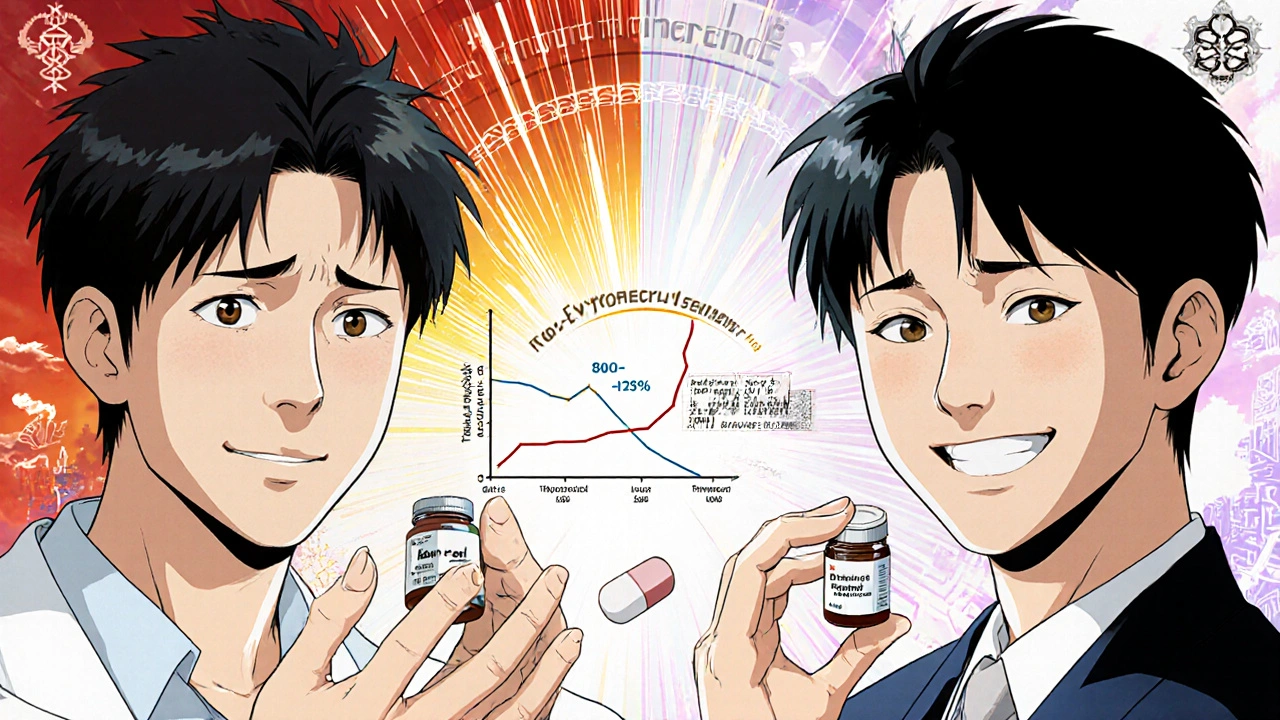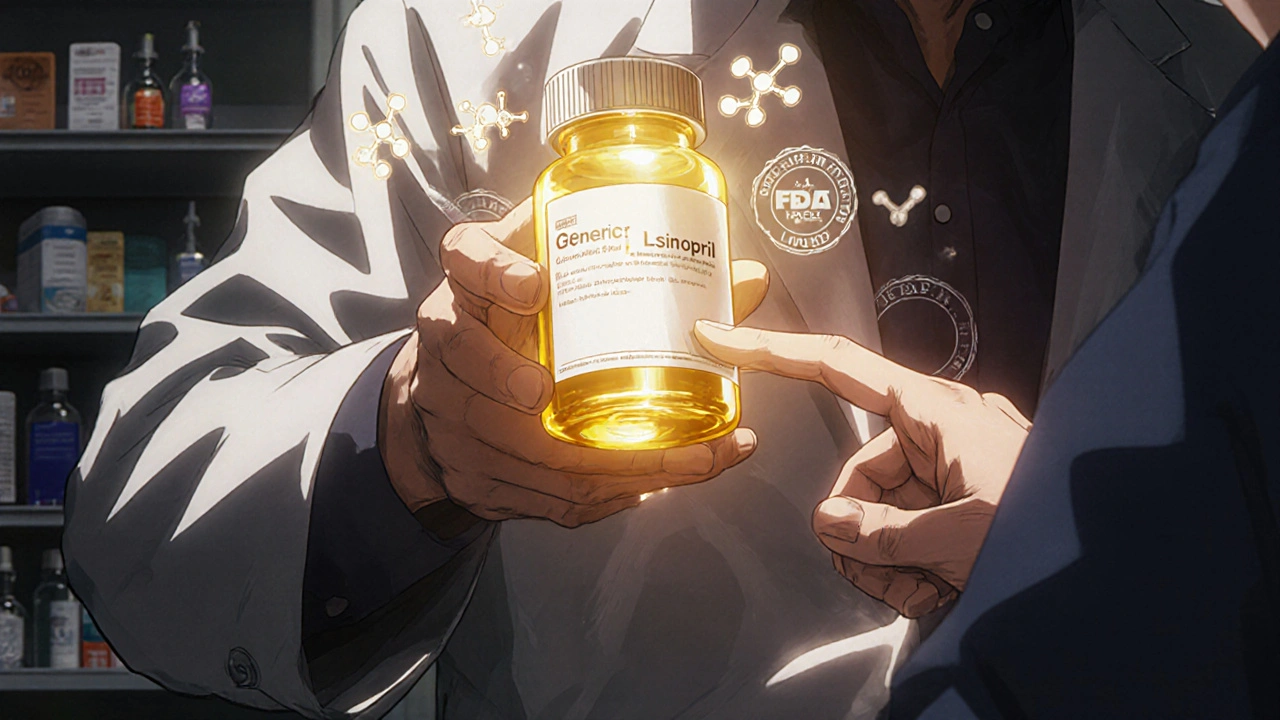When you pick up a prescription, you might see a different name on the bottle than what your doctor wrote. That’s not a mistake-it’s a generic drug. Most people don’t think twice about it. But for others, switching from a brand-name pill to a generic one feels like rolling the dice. Is it just as safe? Will it even work the same way? These fears are common. And they’re often based on myths that don’t match the facts.
Myth: Generic Drugs Are Inferior Quality
One of the biggest myths is that generic drugs are made in cheaper, shoddier factories with lower standards. That’s not true. The U.S. Food and Drug Administration (FDA) requires generic drugs to meet the exact same quality, strength, purity, and potency standards as brand-name drugs. Every manufacturing facility-whether it makes brand-name pills or generics-must pass the same rigorous inspections. In 2022, 98.7% of generic drug plants passed FDA inspections, compared to 97.3% for brand-name facilities. The FDA doesn’t give generics a pass because they’re cheaper. They’re held to the same bar.
The only real difference? Inactive ingredients. These are the fillers, dyes, or preservatives that help the pill hold its shape or taste better. They don’t affect how the drug works. But if you’re allergic to a specific dye or lactose, you might react differently between brands. That’s why checking the label matters. Still, the active ingredient-the part that treats your condition-is identical in every way.
Myth: Generic Drugs Don’t Work as Well
People often say, “My cousin switched to generic lisinopril and it didn’t help.” Or, “I tried the generic version of my antidepressant and felt worse.” These stories sound real. And they are. But they’re not the whole story.
The FDA requires generics to prove they’re bioequivalent to the brand-name drug. That means the body absorbs the active ingredient at nearly the same rate and amount. The standard? The amount of drug in your bloodstream must fall within 80% to 125% of the brand-name version. That’s not a wide gap-it’s a tight range designed to ensure the same effect.
Studies back this up. A 2020 study in Nature analyzed 17 cardiovascular drugs and found that patients on generics had fewer heart attacks and deaths than those on brand names. Another study from 2019 showed generic amlodipine (a blood pressure drug) led to lower rates of heart-related hospitalizations than the brand version. For most people, generics work just as well-if not better.
But here’s the catch: a few drugs are more sensitive. These are called narrow therapeutic index (NTID) drugs. Small changes in how much drug gets into your blood can cause big problems. Examples include warfarin (blood thinner), levothyroxine (for thyroid), and phenytoin (for seizures). For these, the FDA requires stricter testing-bioequivalence must fall between 90% and 112%. Even then, most patients do fine. But if you’re on one of these drugs, your doctor might recommend sticking with the same manufacturer to avoid tiny variations.
Myth: All Generic Drugs Are the Same
No two generics are exactly alike-even if they contain the same active ingredient. Different manufacturers use different processes to make the drug. That can change how quickly the pill dissolves in your stomach. For most drugs, this doesn’t matter. But for NTIDs, even a small delay in absorption can cause trouble.
There have been real cases where patients had problems after switching. One Reddit user reported erratic TSH levels after switching from brand Synthroid to generic levothyroxine. Another patient had breakthrough seizures after switching from brand Keppra to generic levetiracetam. These aren’t common, but they happen. That’s why the FDA and pharmacists recommend that patients on NTIDs stay with the same brand or manufacturer whenever possible.
It’s also why some doctors and hospitals track which generic manufacturer a patient is using. If someone starts having side effects after a switch, they check: Did the pharmacy change the maker? If so, switching back might fix it.

Myth: Generics Are Only for Poor People
Generics aren’t a “budget option.” They’re the standard. In 2022, 90.2% of all prescriptions filled in the U.S. were for generic drugs. That’s not because people can’t afford brand names-it’s because they’re just as good and cost 80-85% less. The U.S. healthcare system saved $2.29 trillion between 2010 and 2020 thanks to generics.
Hospitals? 98% use generics as their first choice. Medicare? Most plans require generics unless there’s a medical reason not to. Insurance companies push them because they save money-and those savings help keep premiums lower for everyone.
Using generics isn’t about compromise. It’s about smart, science-backed choices. You’re not settling. You’re getting the same medicine at a fraction of the cost.
Myth: If It Works, Don’t Switch
This one sounds reasonable. “If my brand-name drug works, why risk changing?” But here’s the reality: you’re already taking a generic most of the time. Unless you specifically asked for the brand, your pharmacy automatically fills your prescription with the generic. That’s standard practice.
And if you’ve been on the same brand for years? You’ve likely already been switched once-maybe even twice. Pharmacies change suppliers based on cost, availability, and contracts. The drug in your bottle today might be made by a different company than last month’s. The FDA says that’s okay. But if you notice a change in how you feel, speak up.
Some people do notice differences. A 2022 Consumer Reports survey found 82% of users saw no change in effectiveness. But 7% reported noticeable differences. That’s a small number-but it’s real. If you feel worse, tired, or off after a switch, don’t ignore it. Talk to your doctor. Ask if the generic manufacturer changed. If needed, request a specific brand or manufacturer.

What You Can Do
Here’s how to protect yourself:
- Check the label. Look for the manufacturer name. If it changes and you feel different, note it.
- Ask your pharmacist. They can tell you if the generic maker changed. They can also tell you if your drug is an NTID.
- Know your drug. If you’re on warfarin, levothyroxine, phenytoin, or other NTIDs, talk to your doctor about staying with one manufacturer.
- Track your symptoms. Keep a simple log: date, drug, how you feel. If you notice a pattern after a switch, bring it to your doctor.
- Use the FDA’s Orange Book. It lists approved generics and their brand equivalents. You can search it online to see what’s available.
Most people never have an issue. But if you’re one of the few who does, you’re not alone-and you’re not imagining it. Your experience matters. The system is built to work for the majority, but it’s flexible enough to adapt when needed.
Bottom Line
Generic drugs are safe. They work. They’re not a second-rate option-they’re the standard. For 9 out of 10 prescriptions, they’re the best choice. The science is clear. The data supports it. The FDA oversees it. And millions of people use them every day without a problem.
Yes, there are rare cases where switching causes issues-especially with complex or narrow therapeutic index drugs. But those cases are exceptions, not the rule. If you’re concerned, talk to your doctor or pharmacist. Don’t assume the worst. Don’t assume the best. Just stay informed. And if you notice a change in how you feel after a switch, speak up. Your health is worth it.
Are generic drugs as safe as brand-name drugs?
Yes. The FDA requires generic drugs to meet the same strict standards for quality, strength, purity, and potency as brand-name drugs. Every manufacturing facility, whether for brand or generic, must pass the same inspections. Generic drugs contain the same active ingredient and are tested to ensure they work the same way in the body.
Why do some people say generic drugs don’t work for them?
A small percentage of people report differences after switching, especially with drugs that have a narrow therapeutic index-like thyroid medication or seizure drugs. These drugs require very precise blood levels. Even tiny changes in how the drug is absorbed can cause symptoms to return or worsen. In most cases, switching back to the original brand or manufacturer fixes the issue. It’s rare, but real.
Can I ask my pharmacy to always give me the same generic brand?
Yes. You can request a specific manufacturer by name when your prescription is filled. Some pharmacies may charge a small extra fee if the requested generic isn’t in stock, but most will accommodate the request, especially for high-risk medications. Ask your pharmacist how to make this happen.
Do generic drugs take longer to work?
For most drugs, no. Generic drugs are required to be absorbed into the bloodstream at the same rate and amount as the brand-name version. In rare cases with complex formulations-like extended-release pills or inhalers-there might be slight differences in how quickly they start working. But for the vast majority of medications, the onset of action is identical.
Why are generic drugs so much cheaper?
Generic manufacturers don’t have to repeat expensive clinical trials. Once a brand-name drug’s patent expires, other companies can make the same drug by proving it’s bioequivalent. That saves millions in research costs. They also face competition, which drives prices down. The result? Generics cost 80-85% less than brand names-without sacrificing quality.
Is it safe to switch between different generic manufacturers?
For most drugs, yes. But for narrow therapeutic index drugs-like warfarin, levothyroxine, or phenytoin-it’s safer to stick with one manufacturer. Small differences in how the drug dissolves can affect blood levels. If you’re on one of these drugs, ask your doctor or pharmacist if you should stay with the same brand.


Jamie Watts
November 16, 2025 AT 15:43Look I get it people are scared of change but come on
Generic drugs are literally the same chemical as brand name
The FDA doesn't sleep on this stuff
If you're having issues it's probably the filler or your brain playing tricks on you
I've been on generics for 15 years and never had a problem
Stop letting pharma scare you into paying more
John Mwalwala
November 17, 2025 AT 18:34Okay but have you ever looked at the supply chain?
Most generics are made in India and China where regulatory oversight is a joke
The FDA does inspections but they're scheduled and the factories know when they're coming
And what about the 2018 heparin contamination scandal?
That was a generic drug
And the 2020 valsartan recall? Also generic
They're not testing for every possible contaminant
And don't get me started on the lack of traceability
It's not about efficacy it's about systemic corruption
They're cutting corners and you're the one swallowing it
Deepak Mishra
November 18, 2025 AT 23:19OMG I switched to generic levothyroxine and my hair started falling out 😭
And then I switched back to Synthroid and BAM 💥
My energy came back like a supernova 🌟
I was so tired I couldn't even walk to the fridge
Now I'm back to normal and I'm crying happy tears 😭❤️
DO NOT SWITCH IF YOU'RE ON NTID DRUGS
MY LIFE WAS IN JEOPARDY
Rachel Wusowicz
November 19, 2025 AT 02:56So... the FDA says it's safe...
But the same FDA approved Vioxx...
And Fen-Phen...
And Thalidomide...
And now they're telling us to trust them again?
Who's auditing the auditors?
Who's watching the watchers?
And why do we keep pretending the system isn't broken?
It's not about one drug or one pill
It's about a culture of deferred responsibility
We're not patients we're test subjects
And the real question is... who profits when we're sick?
Jennifer Walton
November 20, 2025 AT 10:33Consistency matters more than cost
If it works don't fix it
But if you need to switch
Document everything
And talk to your pharmacist
It's not about fear
It's about awareness
Kihya Beitz
November 21, 2025 AT 21:56Oh wow so generics are just as good
Except when they're not
Except when your thyroid goes haywire
Except when your seizures come back
Except when your blood pressure spikes
Except when you're the 7% who 'noticed a difference'
Oh wait that's just you being weak
Or allergic to dye
Or having a bad day
Or your brain being weird
But the science says it's fine
So shut up and take your $3 pill
And thank Big Pharma for your 'savings'
Diane Tomaszewski
November 23, 2025 AT 14:07I used to be scared of generics too
Then I got on a generic statin
My cholesterol dropped
I felt better
Cost was half
That's all I needed to know
Science > fear
Dan Angles
November 24, 2025 AT 07:15Thank you for this comprehensive and evidence-based overview.
It is imperative that patients understand the rigorous regulatory framework governing generic pharmaceuticals.
The FDA's bioequivalence requirements are not arbitrary; they are grounded in decades of pharmacokinetic research.
While individual variability exists, the data overwhelmingly supports the therapeutic equivalence of approved generics.
Healthcare providers have a duty to educate patients on this matter, not to perpetuate unfounded anxieties.
Moreover, the economic impact of generic adoption cannot be overstated.
It is not merely a cost-saving measure-it is a public health imperative.
Continued advocacy for equitable access to safe, effective medication must remain a priority.
David Rooksby
November 24, 2025 AT 10:10Right so let me get this straight
The FDA says generics are fine
But they also say if you're on warfarin or levothyroxine you should stick to one brand
So which is it?
If they're the same why do they care which manufacturer?
And why do hospitals track the manufacturer like it's a serial number?
And why do some pharmacists refuse to switch without doctor approval?
And why do insurance companies push generics but won't cover the same generic from two different makers?
It's not that generics are bad
It's that the system is a mess
They're treating patients like lab rats
And calling it 'efficiency'
Meanwhile the manufacturers are making billions off the same pill with different packaging
And we're supposed to be grateful?
Don't be fooled
This isn't science
This is corporate theater
Melanie Taylor
November 25, 2025 AT 00:37OMG I just realized I've been on generics my whole life 😱
And I'm still alive!! 🙌
My mom used to freak out about generics
But look at me
I'm 42
Healthy
Active
And I saved thousands
PS: I use the Orange Book now 📖
PPS: My pharmacist is my hero 🏥❤️
Teresa Smith
November 26, 2025 AT 18:52Let me be clear: the data supports generics as safe and effective for the vast majority of patients.
But dismissing individual experiences as 'anecdotal' is dangerous.
Patients are not data points.
When someone reports a change in symptoms after a switch, it is not weakness-it is vital feedback.
The system must be flexible enough to accommodate biological variability.
Advocating for generics is not about blind trust-it's about informed choice.
Patients deserve transparency.
Pharmacists must inform.
Doctors must listen.
And regulators must respond.
This isn't just about pills.
It's about dignity in healthcare.